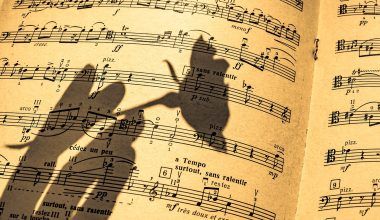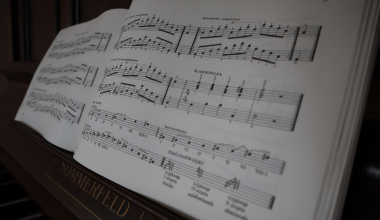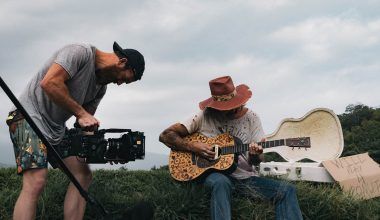If you’ve ever released music or worked in the music industry, you might have come across the term “ISRC.” But what does ISRC stand for, and why is it important? In this blog, we will explore the ISRC full form, its purpose, and why every musician should know about it. Whether you’re a budding artist or a seasoned professional, understanding ISRC codes can help you protect and monetize your music effectively.
Let’s dive into the details and understand why ISRC is essential for anyone in the music world.
What Does ISRC Stand For?
The full form of ISRC is International Standard Recording Code. It is a unique identifier assigned to a specific sound recording or music video. Think of it as a digital fingerprint for your track.
Each ISRC code is unique and helps differentiate one recording from another. It doesn’t matter how many times the song is distributed or streamed; the ISRC remains the same for that particular recording.
This code is vital for tracking and monetizing music globally. Without an ISRC, managing royalties, licensing, and copyright can become a complicated process.
Why is the ISRC Full Form Important?
Understanding the ISRC full form is just the beginning. Knowing what an ISRC does and how it works can help you maximize your music’s reach and revenue.
Here’s why ISRC codes are crucial:
- Tracks Usage
ISRC codes help track where and how your music is used. Whether it’s streamed, played on the radio, or used in a TV show, the ISRC identifies your recording. - Monetizes Music
For every stream or play, ISRC codes ensure that the rightful owner gets paid. This is especially important for independent artists. - Prevents Confusion
Multiple versions of a song, such as remixes or covers, can exist. ISRC codes differentiate them. - Supports Copyright Protection
An ISRC code helps protect your intellectual property by assigning a unique identifier to your music. - Enables Global Distribution
Major streaming platforms and distributors require ISRC codes to list your music.
Understanding the ISRC full form and its purpose can help you manage your music more effectively.
How is an ISRC Code Structured?
Now that you know the ISRC full form, let’s break down its structure.
An ISRC code consists of 12 characters and is divided into four parts:
- Country Code (2 Characters)
This represents the country of the registrant. For example, “US” for the United States. - Registrant Code (3 Characters)
A unique code assigned to the entity registering the ISRC, like a record label or an independent artist. - Year of Reference (2 Characters)
Indicates the year the ISRC was assigned. - Designation Code (5 Characters)
A unique code assigned to the specific recording.
Here’s an example of an ISRC code:US-ABC-23-00001
- “US” is the country code.
- “ABC” is the registrant code.
- “23” indicates the year 2023.
- “00001” is the unique designation for the recording.
This structure ensures that no two recordings have the same ISRC code.
How to Get an ISRC Code?
If you’re planning to release music, getting an ISRC code is essential. Here’s how you can obtain one:
- Through Your Distributor
Many music distributors, like TuneCore, CD Baby, or DistroKid, automatically assign ISRC codes to your tracks. - Apply Directly
You can register with an ISRC agency in your country to get codes. The process is straightforward and often involves a small fee. - Use a Music Label
If you’re signed to a label, they will typically handle ISRC assignments for your recordings.
Getting an ISRC code ensures that your music is recognized and tracked worldwide.
ISRC Codes and Digital Platforms
One of the primary uses of ISRC codes is on digital platforms. Streaming services like Spotify, Apple Music, and YouTube rely on ISRC codes to track streams and pay royalties.
Here’s how ISRC works with major platforms:
- Spotify
Spotify uses ISRC codes to identify songs in its database. Without an ISRC, your track cannot be listed. - Apple Music
Apple Music also requires ISRC codes to track plays and distribute royalties accurately. - YouTube Content ID
ISRC codes are essential for YouTube’s Content ID system. They help identify copyrighted material in videos.
Posting music without an ISRC code on these platforms can lead to missed opportunities and revenue losses.
Common Misconceptions About ISRC Codes
Many people misunderstand the purpose and function of ISRC codes. Let’s clear up some common myths:
- ISRC Codes Are Not Copyrights
The ISRC full form—International Standard Recording Code—indicates that it is a unique identifier, not a copyright. You still need to register your music for copyright protection. - One ISRC Per Recording
Each version of a song (e.g., live, remix, or acoustic) requires a unique ISRC code. - ISRC Codes Are Not Optional
If you want to monetize your music on digital platforms, ISRC codes are mandatory.
Understanding these facts can help you avoid mistakes when releasing your music.
How to Use ISRC Codes Effectively
Once you have your ISRC codes, here’s how to make the most of them:
- Include in Metadata
Always include the ISRC code in your song’s metadata when uploading to digital platforms. - Provide to PROs
Share your ISRC codes with performing rights organizations (PROs) to track royalties. - Monitor Usage
Use tools like SoundExchange or Nielsen to monitor where your music is being played. - Keep Records
Maintain a record of all ISRC codes assigned to your recordings. This helps you track royalties and licensing.
By using ISRC codes effectively, you can maximize your music’s reach and revenue potential.
Conclusion
The ISRC full form—International Standard Recording Code—represents more than just a set of numbers. It is a crucial tool for any artist, producer, or label in the music industry.
From tracking royalties to protecting your work, ISRC codes ensure your music is recognized and monetized globally. Whether you’re a new artist or an established one, understanding ISRC codes can make a significant difference in managing your career.
Related Articles:
For further reading, explore these related articles:
- Understanding ISRC Codes and Their Importance in Tracking and Distributing Your Music
- How to Write a Song: A Step-by-Step Guide for Beginners
- The Complete Guide to Music Distribution: How to Share Your Music with the World
For additional resources on music marketing and distribution, visit Deliver My Tune.





